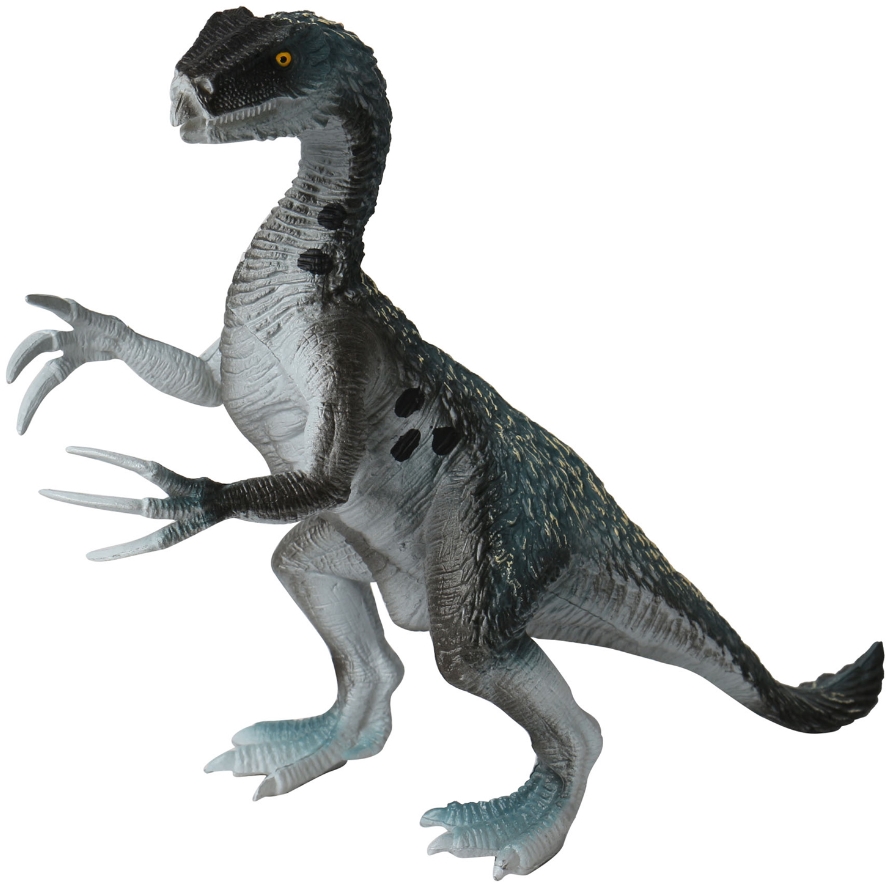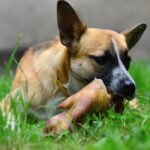The Therizinosaurus, a giant theropod known for its massive claws and peculiar herbivorous diet, presents an intriguing puzzle for paleontologists. As one of the strangest dinosaurs to have ever roamed the Earth, its interactions with other dinosaurs are a subject of much speculation and interest. Did it live a solitary life, or did it interact with other species in its ecosystem? Understanding the social behavior and interactions of this enigmatic dinosaur can shed light on its role in the Late Cretaceous period and how it coexisted with the many other formidable creatures that lived at the same time.
1. A Solitary Herbivore in a World of Carnivores
Therizinosaurus lived during the Late Cretaceous period, around 70 million years ago, in what is now Mongolia. This was a time when large carnivorous dinosaurs like Tyrannosaurus rex and Velociraptor roamed the Earth alongside plant-eating giants such as Triceratops and Hadrosaurus. However, the Therizinosaurus stood out as a herbivorous theropod, which, given its large size and fearsome claws, raises the question: how did it coexist with these carnivores?
The most likely scenario is that Therizinosaurus led a largely solitary existence, avoiding direct conflict with predators and other herbivores. Its enormous claws, while likely used for reaching vegetation or defending itself, may have been a deterrent to carnivores. The sight of such powerful, sharp claws would have discouraged most predators from engaging with this unusual dinosaur, allowing it to go about its day without constant threat.
2. Possible Interactions with Other Herbivores
While much of the focus has been on the Therizinosaurus’s interactions with carnivores, its relationship with other herbivorous dinosaurs is just as important. Like other large herbivores, it would have been part of the complex food chain, competing for resources such as plants and water. The Therizinosaurus, with its specialized claws for reaching high vegetation, may have had an advantage over other herbivores that foraged on ground-level plants.
However, competition for food could have led to some level of interaction or even conflict. The presence of large plant-eating dinosaurs such as Saurolophus and Hypsilophodon in the same habitat could have led to territorial disputes or competition for prime feeding spots. Given its distinct feeding habits, the Therizinosaurus might have preferred different types of plants or feeding locations, thus reducing direct competition with other herbivores.
3. Territorial Behavior and Dominance Displays
Although there is no direct evidence to confirm it, the long claws of the Therizinosaurus might have been used in displays of dominance or territorial behavior, similar to how modern-day animals use impressive physical traits to assert control over a territory. The presence of such large, intimidating claws could have made it a dominant herbivore in its environment, possibly deterring other animals from intruding into its feeding areas.
In this sense, the Therizinosaurus may have used its claws not only for practical purposes like reaching vegetation or defending itself but also to assert its place in the ecosystem. This could have included intimidation tactics, such as standing tall on its hind legs or using its claws to ward off smaller herbivores or potential threats.
4. Interactions with Carnivores
Despite its fearsome claws, the Therizinosaurus was likely not an apex predator. It was a herbivore, and while it may have occasionally been threatened by large carnivores, it would have avoided direct confrontations. Its claws, although potentially used for defense, were not suited for offensive action, and it’s unlikely that the Therizinosaurus would have used them to hunt.
Instead, the Therizinosaurus may have employed a combination of behavior and physical traits to protect itself from predators. Its large size, defensive claws, and possibly its social behavior—if it lived in small groups—would have made it a challenging target for carnivores. In addition, its habitat choice in forested or dense vegetative environments would have provided some natural cover and refuge from larger predators.
5. Feeding Behavior and Resource Sharing
Therizinosaurus likely didn’t interact with other dinosaurs in large groups, but its feeding habits suggest it played a specific role in its ecosystem. As a specialized herbivore, it would have contributed to the ecosystem by consuming plant matter, which would have had an indirect effect on the surrounding environment. This could have also influenced the behaviors of other herbivores, as the Therizinosaurus’s selective feeding habits might have allowed it to coexist peacefully with other species that fed on different types of plants.
By feeding on higher foliage, the Therizinosaurus might have reduced competition with other herbivores that consumed lower-lying vegetation, thus promoting a more diverse and balanced ecosystem. This niche specialization suggests that the Therizinosaurus could have indirectly influenced the behavior of other herbivores by altering the plant life and available resources in its habitat.
6. Social Structure and Group Behavior
While there is limited evidence to suggest that Therizinosaurus lived in groups, the possibility cannot be entirely ruled out. Some theropods are known to have exhibited social behavior, and it is conceivable that Therizinosaurus, too, might have shared its environment with others of its kind. If it did live in groups, these groups would likely have been small, as there is no indication that the Therizinosaurus was a highly social species. Its large size and intimidating claws might have made it a solitary animal, though the presence of feathers (as suggested by some fossil evidence) could point to a more complex social structure, akin to modern-day birds.
7. The Role of Therizinosaurus in Its Ecosystem
In the grand scheme of its ecosystem, the Therizinosaurus likely played a role as both a consumer and an influence on its environment. By feeding on high vegetation, it may have shaped the plant life in its habitat, affecting the types of plants available for other species. Its interactions with other dinosaurs, particularly herbivores and carnivores, would have been part of a delicate balance, with the Therizinosaurus acting as a key player in the food web.

Conclusion
The interactions of Therizinosaurus with other dinosaurs are still the subject of much scientific inquiry, but it is clear that this strange and unique dinosaur had a significant role in its ecosystem. As a herbivore with fearsome claws, it likely avoided direct conflicts with carnivores, using its claws for defense, foraging, and possibly territorial behavior. While its interactions with other herbivores may have involved competition for resources, its specialized feeding habits likely reduced direct competition. Whether solitary or social, the Therizinosaurus was undoubtedly an important figure in the Late Cretaceous period, helping to shape the dynamics of its environment.



